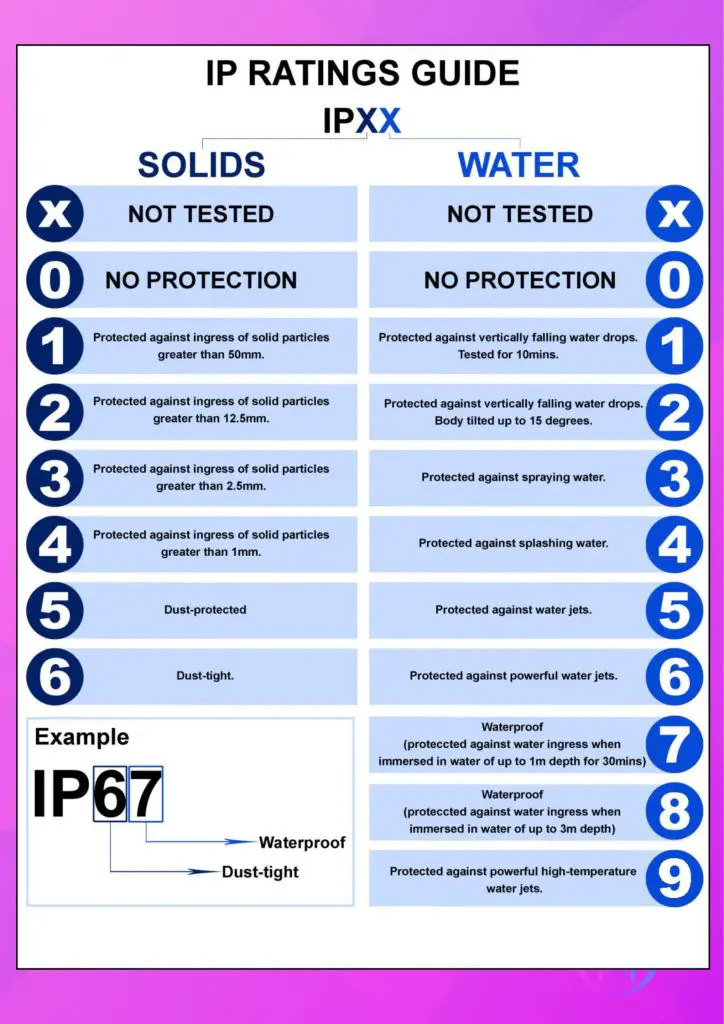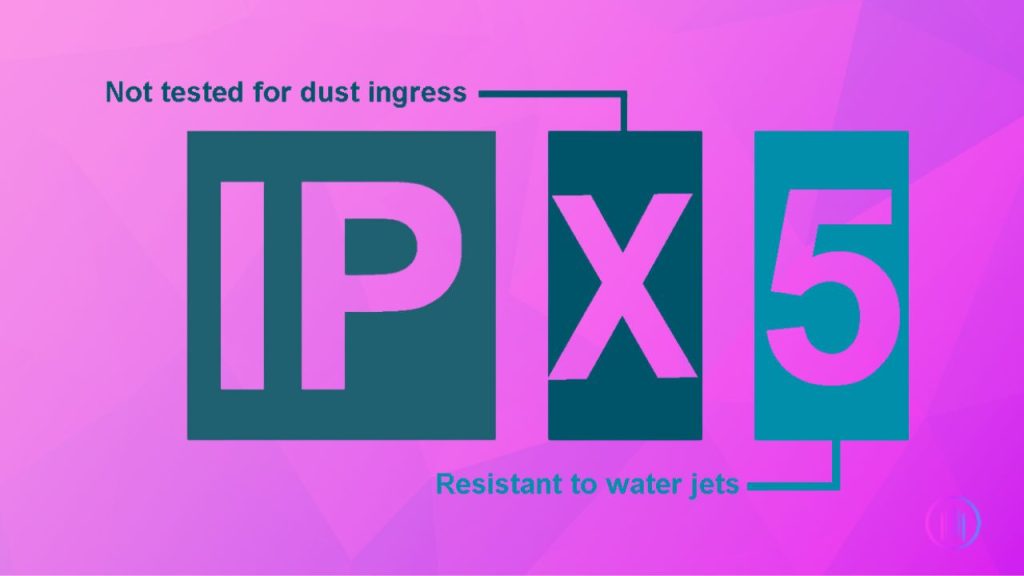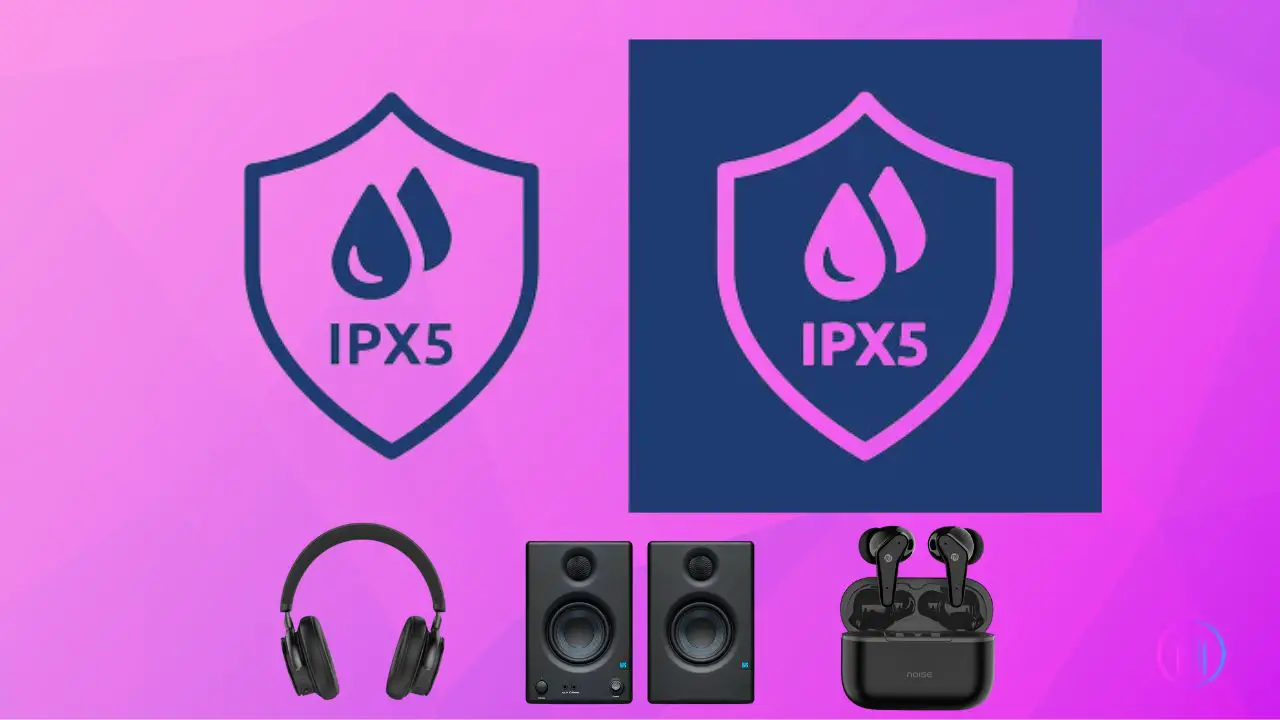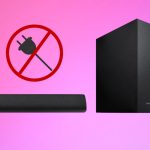Ever wondered, ‘What is an IPX5 Rating?’ Why do some of my gadgets, like smartphones, headphones, speakers, and earbuds, keep working perfectly even after a splash or getting caught in the rain? As someone deeply invested in keeping my electronics safe and functional, understanding the IPX5 rating has been a game changer. This standard not only measures how well devices resist water but also influences my decisions when buying electronics. It’s essential for anyone looking to protect their gear from water damage. So, let’s explore what IPX5 means and why it’s crucial for devices we use every day.
Understanding IP and IPX Ratings
The IP (Ingress Protection) and IPX ratings, established by the International Electrotechnical Commission (IEC) and refined by the International Organization for Standardization (ISO), are essential for understanding how well electronic devices resist dust and water. The ‘IP’ in the rating stands for Ingress Protection, indicating how effectively a device is sealed against environmental elements.
Dust and Water Resistance Levels: The first digit in an IP rating (0-6) tells you about dust resistance. A ‘0’ means no protection, and a ‘6’ means completely dustproof. The second digit (0-9) indicates water resistance. Here, ‘0’ is no protection, while ‘9′ signifies the ability to withstand high-pressure, high-temperature water jets. Devices rated ‘7’ or ‘8’ are often considered waterproof, withstanding temporary or continuous immersion in water.
The ‘X’ Factor: If a device hasn’t been tested for dust or water resistance, an ‘X’ replaces the respective numeral. So, ‘IPX4’ means the device is tested for water resistance (protecting against splashes) but not for dust.
ISO and IEC Differences: The ISO standard, specifically ISO 20653, introduces three extra ratings (IPX4K, IPX6K, IPX9K) not recognized by the IEC. These ‘K’ ratings indicate enhanced pressure resistance. Notably, IEC’s IPX9 is equivalent to ISO’s IPX9K.

Founders of the IP and IPX Rating System
Did you know the IP and IPX ratings that tell us how well our gadgets fend off dust and water were actually introduced by the International Electrotechnical Commission (IEC)? Founded in 1906, the IEC has been a game changer in the world of electronics. It’s their standards that ensure our devices can stand up to everything from a dusty shelf to a sudden rain shower. This isn’t just about technical details; it’s about making sure our favorite gadgets are tough enough for real life. Thanks to the IEC, when we see those IP ratings, we know exactly what our tech can handle.

What is IPX5 Rating?
An IPX5 rating is a clear indicator of how well a device can resist water. Specifically, it means that the device is protected against low pressure water jets from any direction. This rating is particularly relevant for electronic devices, ensuring they can handle being splashed or sprayed with water. For instance, if you’re caught in the rain or accidentally splash water on your device, an IPX5 rated device should be able to withstand this without any damage to its functionality. It’s a practical and essential feature for many electronic products, offering a degree of protection and peace of mind in everyday situations where water exposure might occur.

Understanding the IPX5 Rating
| Feature | Description |
|---|---|
| IPX5 Rating | Low-Pressure Water Jet Protection |
| Dust Protection | Not Specified (Indicated by ‘X’) |
| Water Protection | Protection against low-pressure water jets from any direction |
| Practical Scenario | Suitable for use in conditions with splashes or water jets, like heavy rain |
| Compared to Other Ratings | Higher water resistance than IPX0-IPX4; less than IPX7 or IPX8 which offer submersion protection |
| Applicable Standards | Part of the IEC (International Electrotechnical Commission) standard, recognized globally |
1. Certification of Water and Dust Resistance in Electronic Devices:
The IPX5 rating is a crucial benchmark in determining the water resistance of electronic devices. This rating is granted only after a device successfully passes stringent testing procedures conducted by certified, independent laboratories. These labs operate under the guidelines of the International Electrotechnical Commission (IEC), ensuring a high standard of testing.
- Mandatory Third-party Certification for IPX Ratings:
- Manufacturer vs. Certified Lab Testing: To be labeled with an IPX rating, devices must be tested by a certified lab. Manufacturers can conduct their own tests, but these do not qualify for official IPX certification.
- Independent Verification: This process provides consumers with a reliable standard, assuring them of the device’s certified water and dust resistance.
- Testing Procedures for IPX5 Rating:
- Nozzle Diameter: The device is tested with water projected from a 6.3mm nozzle, which is smaller than the one used for IPX6, indicating different levels of water resistance.
- Distance and Coverage: During the test, the nozzle is placed 3 meters away from the device, ensuring complete coverage from all angles.
- Water Volume and Pressure: The water is expelled at 12.5 liters per minute with a pressure of 30 kPa.
- Duration: The test lasts at least 3 minutes, or 1 minute per square meter of the device’s surface area.
- Goal of Testing: The objective is to confirm that the device can endure this level of water exposure without its functionality being compromised.
- Waterproof Capabilities Beyond IPX Ratings:
- Not all water resistant devices have an IP or IPX rating. Some manufacturers, like GoPro, prefer in-house testing.
- Models like Hero11 Black and Hero10 Black are waterproof up to 33 feet, surpassing the IPX8 rating, yet they don’t have an official IP/IPX rating.
2. Is IPX5 Good Enough for Audio Gear?
When it comes to choosing headphones and speakers for outdoor use, the IPX5 rating is a key factor to consider. This rating ensures that your audio gear can handle a fair share of water exposure think splashes or light rain making it a reliable choice for daily outdoor activities and exercise routines. But remember, IPX5 isn’t cut out for underwater use, so it’s not suitable for swimming.
Comparing IPX5 with other ratings, it’s evident that it offers more protection than IPX4. While IPX4 guards against water sprays, IPX5 steps it up, safeguarding your device against water jets. This doesn’t necessarily mean IPX5 devices have more usage scenarios than IPX4 they both excel in similar environments like showers or during workouts. However, with IPX5, your device is better equipped to handle heavier rain and is more likely to survive those unexpected water splashes.
If you’re caught between choosing IPX4 and IPX5 for your next audio device, I’d lean towards IPX5 for that extra layer of protection. But if your choices include IPX7 or IPX8, think about how you plan to use the device. For anything involving submersion in water, higher IPX ratings are the way to go.
3. Understanding the Importance of IPX5 Water Resistance in Device:
When it comes to devices like headphones and speakers, the risk of water exposure is common, particularly from sweat during workouts or light rain. An IPX5 rating is crucial for these devices, offering protection in everyday situations, such as near pools or beaches.
Devices with an IPX5 rating can resist low-pressure water jets. This means they’re safe for use in scenarios where splashes or light rain might occur. They are also suitable for shower use, but it’s important to note that they are not designed for underwater activities like swimming. While IPX5 protects against water, it doesn’t fully guard against vapor, so care should be taken with hot showers as the vapor can potentially damage the device.
Final Thoughts
An IPX5 rating guarantees our electronic devices are protected against water a crucial assurance for technology used in daily water related scenarios. Whether it’s listening to music during workouts or getting caught in the rain, devices with IPX5 rating offer the necessary protection. Ultimately, understanding and leveraging ratings like IPX5 enables us to make informed decisions, opening the door to better choices in technology. May your choices in gadgets bring you durability, reliability, and peace of mind in all your adventures.
FAQs
Yes, devices with an IPX5 rating are suitable for use in the rain. An IPX5 rating means that the device is protected against low pressure water jets from any direction. So, if you get caught in the rain or your device gets splashed with rainwater, an IPX5-rated device should be able to withstand this without any damage.
Gadgets with an IPX5 rating are okay to use in the shower because they offer protection against low pressure water jets. However, it’s important to remember that an IPX5 rating does not protect against being submerged in water, so you should avoid submerging your gadget. When using it in the shower, also consider the risk of steam, as steam can potentially harm the electronic components inside the gadget. While IPX5 rated devices are protected against splashes and light rain, caution should be exercised during shower use.
No, it’s not advisable to swim with devices that have an IPX5 rating. An IPX5 rating means the device is protected against low-pressure water jets, but it’s not suitable for submersion or underwater use. Swimming typically involves taking the device under water where the pressure and potential for water damage are much higher than what IPX5 protection offers. If you need a device for swimming, look for ones with higher ratings like IPX7 or IPX8, which are appropriate for underwater use.
No, IPX5 and IP65 are not the same. IPX5 is focused solely on water resistance, indicating protection against low-pressure water jets without addressing dust resistance the “X” signifies no dust rating. In contrast, IP65 signifies protection against both dust (with a “6” rating for being dustproof) and low pressure water jets (with a “5” rating), offering a comprehensive defense against both elements. This makes IP65 suitable for environments needing protection against dust and water, while IPX5 is purely for water resistance.
Devices with an IPX5 rating are good for both indoor and outdoor use, but they are especially useful for outdoor activities where they might get wet, like getting caught in the rain or splashed with water. Their water resistance feature makes them ideal for outdoor use, especially in situations where the devices need protection from water.

I’m Shaun Conroy, an audiophile & founder of HiFi Audios. Holding a Bachelor’s in Sound Engineering, I bring deep expertise in audio devices and offer insights & recommendations to fellow enthusiasts.






